Chapter 11.7: Post Impressionism
Breaking free of the naturalism of Impressionism in the late 1880s, a group of young painters sought independent artistic styles for expressing emotions rather than simply optical impressions, concentrating on themes of deeper symbolism. Through the use of simplified colors and definitive forms, their art was characterized by a renewed aesthetic sense as well as abstract tendencies.
Among the rising generation of artists responding to Impressionism, Paul Gauguin (1848–1903) and Georges Seurat (1859–1891) – who also hanged works in at least one of the Impressionist shows. Vincent van Gogh (1853–1890) and Paul Cézanne (1839–1906), who followed diverse stylistic paths in search of authentic intellectual and artistic achievements. These artists, often working independently, are today called Post-Impressionists. Although they did not view themselves as part of a collective movement at the time, Roger Fry (1866–1934), critic and artist, broadly categorized them as “Post-Impressionists,” a term that he coined in his seminal exhibition Manet and the Post-Impressionists installed at the Grafton Galleries in London in 1910.
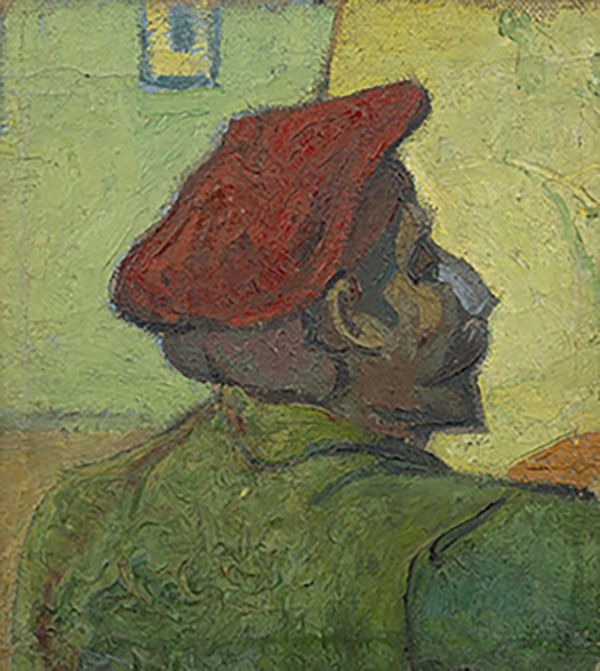
Images and Videos
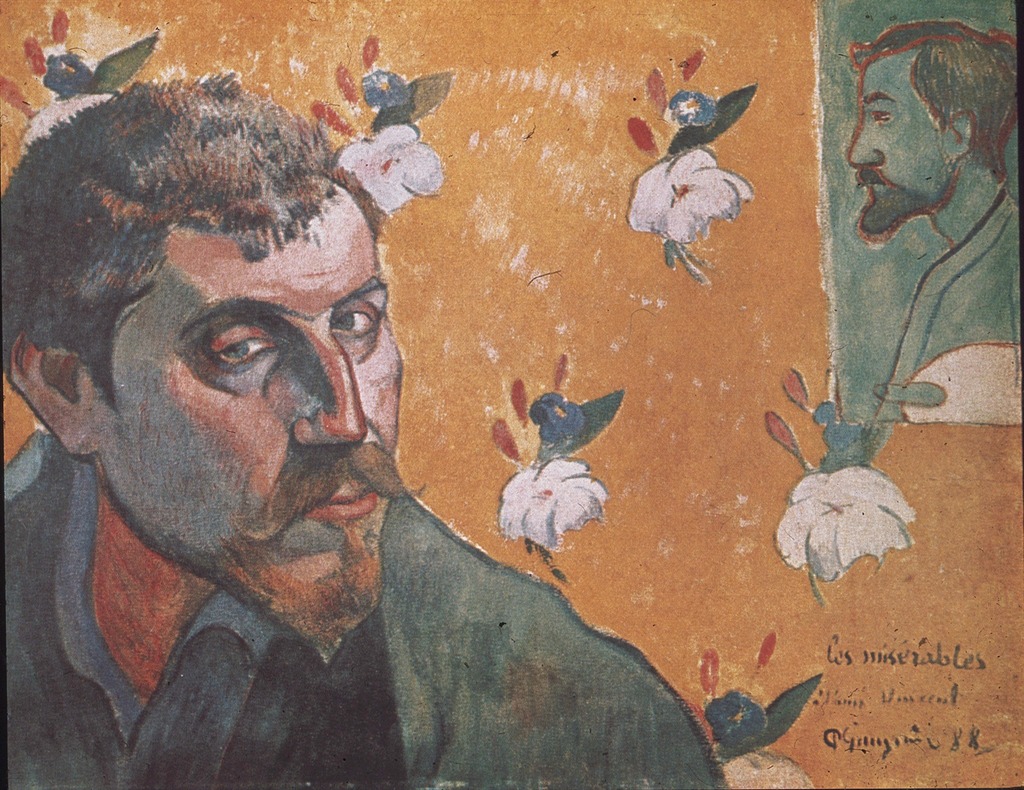
Paul Gauguin, Self-Portrait with Portrait of Émile Bernard (Les Miserables) (5:32)
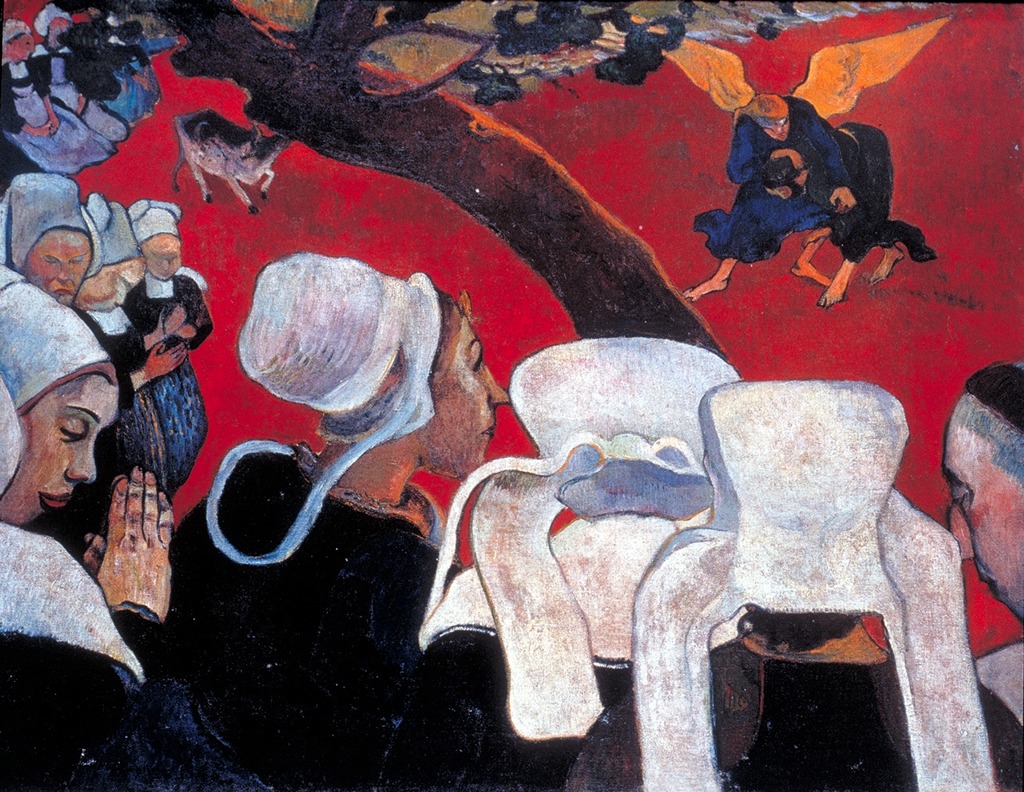
Paul Gauguin, Vision after the Sermon, or Jacob Wrestling with the Angel (3:39)
Seurat and Pointillism
Georges Seurat, founder of the 19th-century French school of Neo-Impressionism whose technique for portraying the play of light using tiny brushstrokes of contrasting colors became known as Pointillism. Using this technique, he created huge compositions with tiny, detached strokes of pure color too small to be distinguished when looking at the entire work but making his paintings shimmer with brilliance. Works in this style include Une Baignade, Asnières (1883–84) and A Sunday on La Grande Jatte—1884 (1884–86).
In the 1880s, Georges Seurat was at the forefront of the challenges to Impressionism with his unique analyses based on then-current notions of optical and color theories. Seurat believed that by placing tiny dabs of pure colors adjacent to one another, a viewer’s eye compensated for the visual disparity between the two by “mixing” the primaries to model a composite hue. The Study for “A Sunday on La Grande Jatte” embodies Seurat’s experimental style, which was dubbed Neo-Impressionism.
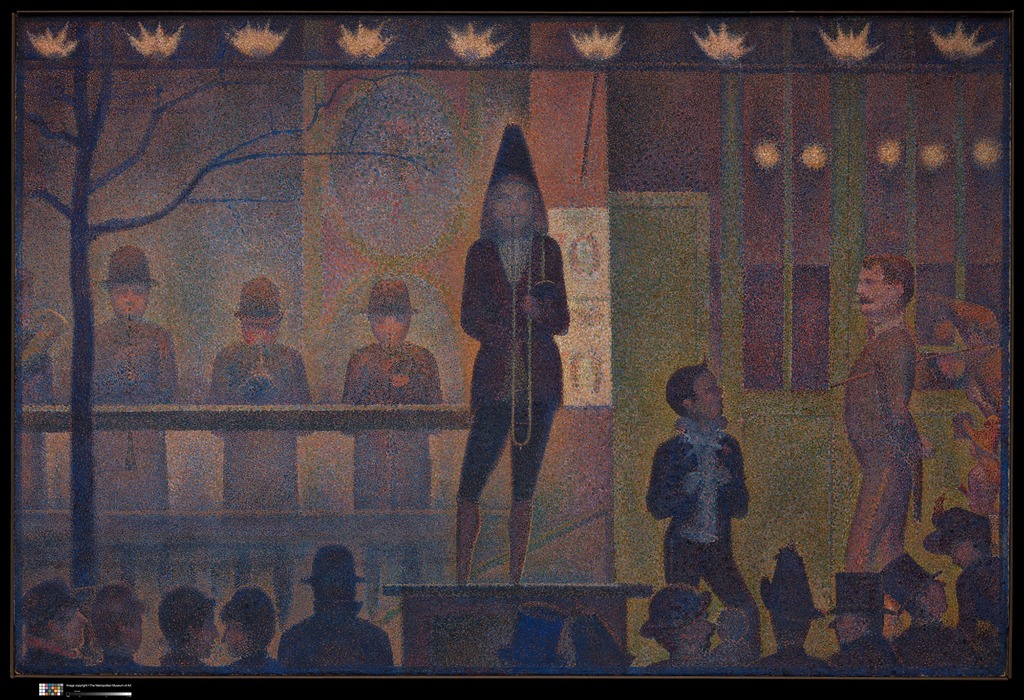
Images and Videos
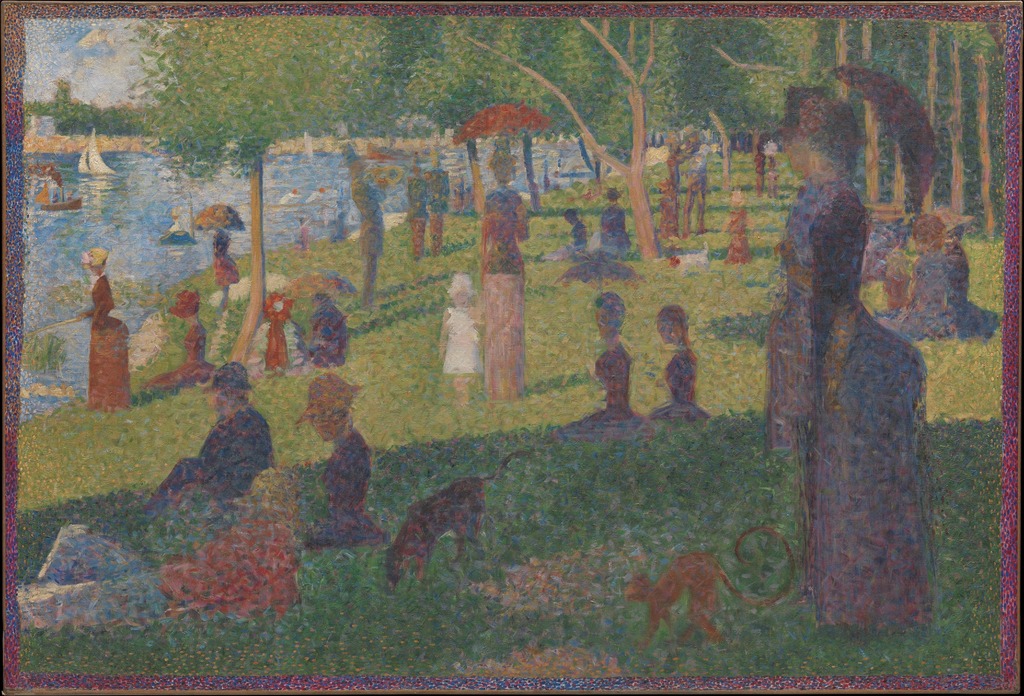
Seurat, A Sunday on La Grande Jatte (6:42)
Vincent van Gogh
Vincent van Gogh, Dutch painter, generally considered the greatest after Rembrandt van Rijn, and one of the greatest of the Post-Impressionists. The striking color, emphatic brushwork, and contoured forms of his work powerfully influenced the current of Expressionism in modern art. Van Gogh’s art became astoundingly popular after his death, especially in the late 20th century, when his work sold for record-breaking sums at auctions around the world and was featured in blockbuster touring exhibitions. In part because of his extensive published letters, van Gogh has also been mythologized in the popular imagination as the quintessential tortured artist.
Vincent van Gogh: Emotion, Vision, and A Singular Style
Mention Vincent van Gogh and one of the first things likely to come to many people’s minds is the fact that he cut off his own ear. This stark act, committed in 1888, marked the beginning of the deepening mental health crisis (some believe he suffered bipolar disorder) that would plague him until the end of his life. But to know van Gogh is to get past the caricature of the tortured, misunderstood artist and to become acquainted instead with the hardworking, deeply religious, and difficult man. Van Gogh found his place in art and produced emotional, visually arresting paintings over the course of a career that lasted only a decade. Largely self-taught, van Gogh produced more than 2,000 oil paintings, watercolors, drawings, and sketches, which became in demand only after his death. He also wrote scores of letters, especially to his brother Theo, in which he worked out his thoughts about art. “Always continue walking a lot and loving nature, for that’s the real way to learn to understand art better and better,” he wrote in 1874. “Painters understand nature and love it, and teach us to see.”1
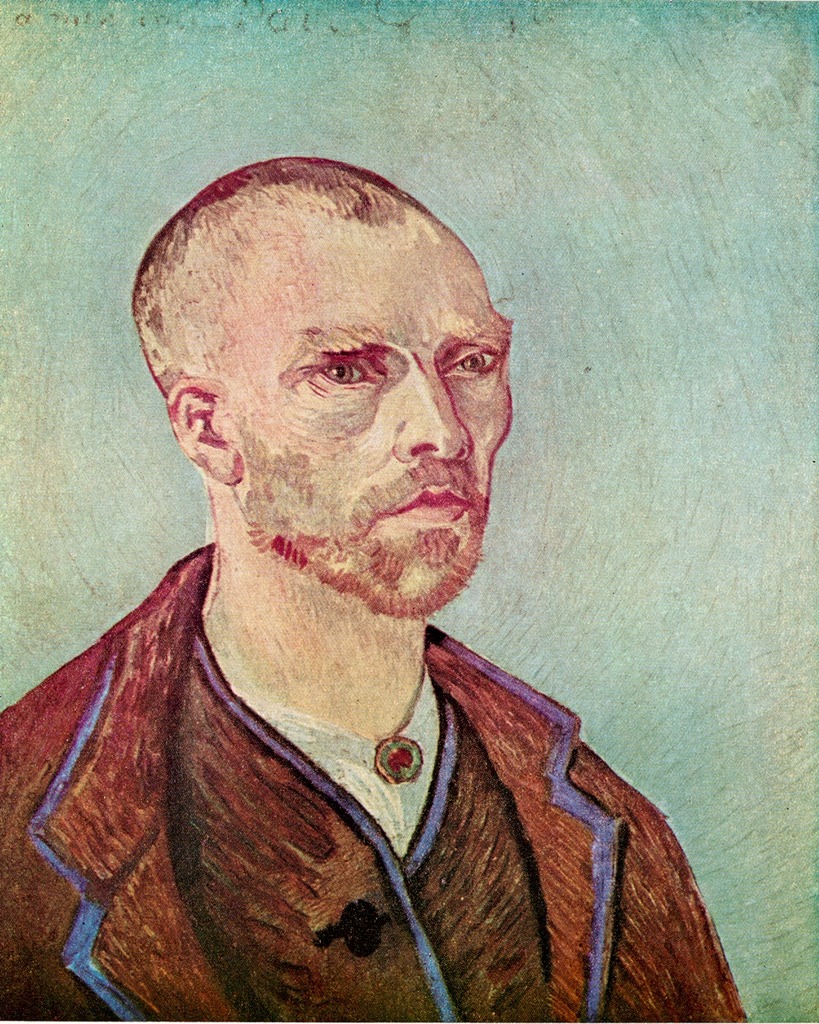
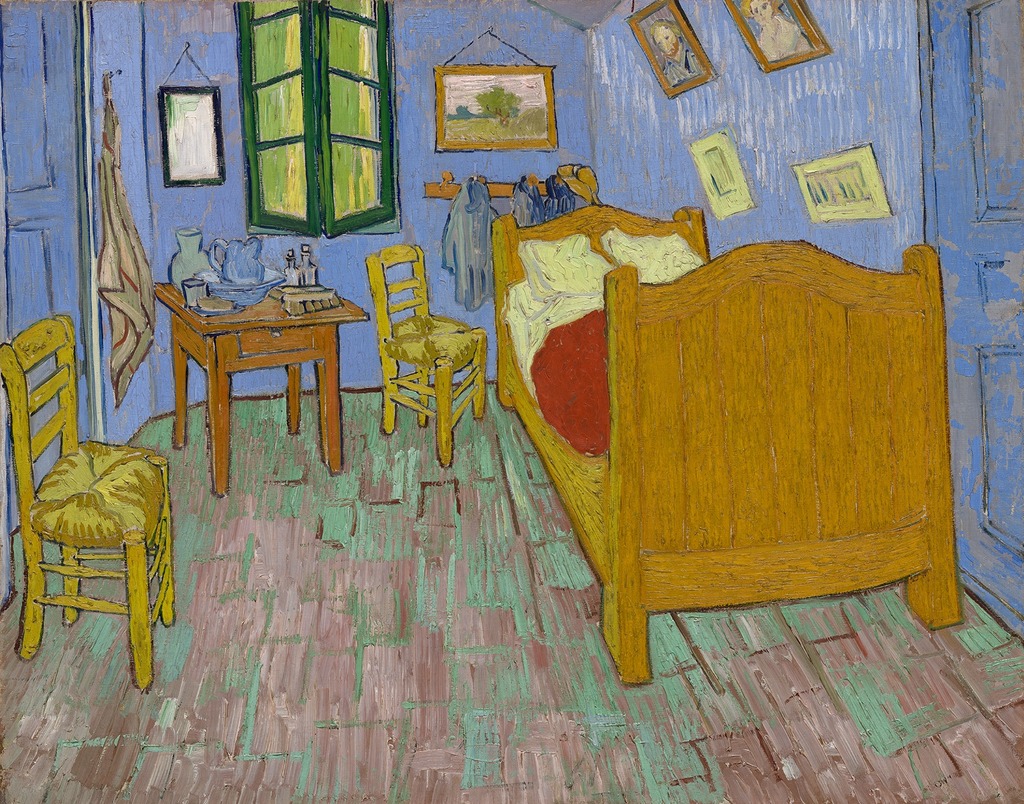
In 1886, van Gogh moved to Paris, where he encountered the works of the Impressionists and Neo-Impressionists, and the Pointillist compositions of Georges Seurat. Inspired by these artists’ harmonious matching of colors, shorter brushstrokes, and liberal use of paint, he brightened his own palette and loosened his brushwork, emphasizing the physical application of paint on the canvas, and the ultimate expression of his emotional and psychological responses to the world through bold colors and expressive, often symbolic images.
Van Gogh and his work will eventually become one of the most important influences of the 20th century, and the prime inspiration for the Expressionists and Abstract Expressionist -important movements that will emphasize the translation of emotion at all costs.
Images and Videos
Van Gogh, Self-Portrait Dedicated to Paul Gauguin (2:49)
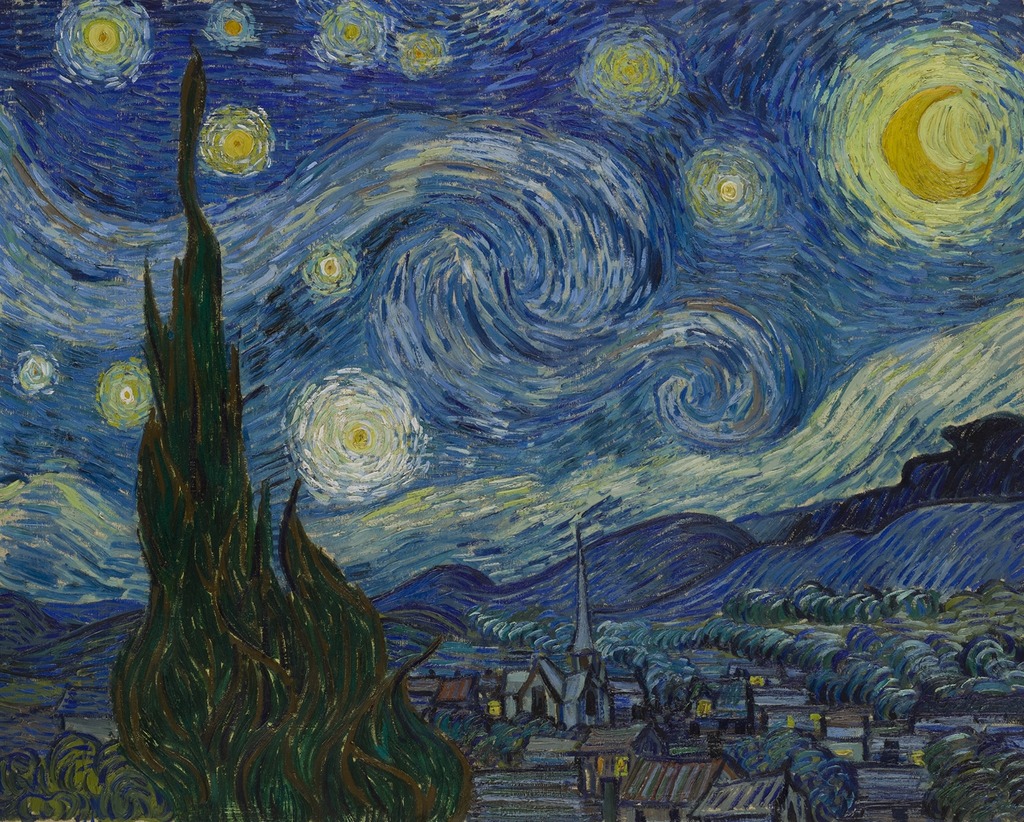
Better Know: The Starry Night | The Art Assignment | PBS Digital Studios (8:19)
Cézanne
Paul Cézanne, one of the greatest of the Post-Impressionists, whose works and ideas were influential in the aesthetic development of many 20th-century artists and art movements, especially Cubism. Cézanne’s art, misunderstood and discredited by the public during most of his life, grew out of Impressionism and eventually challenged all the conventional values of painting in the 19th century because of his insistence on personal and intellectual expression and on the integrity of the painting itself, regardless of subject matter. Working outdoors, but with a different purpose Like the Impressionists, Cézanne often worked outdoors directly before his subjects. But unlike the Impressionists, Cézanne used color, not as an end in itself, but rather like line, as a tool with which to construct form and space. Ironically, it is the Parisian avant-garde that would eventually seek him out. In the first years of the 20th century, just at the end of Cézanne’s life, young artists would make a pilgrimage to Aix, to see the man who would change painting.
Working outdoors, but with a different purpose
Like the Impressionists, Cézzane often worked outdoors directly before his subjects. But unlike the Impressionists, Cézanne used color, not as an end in itself, but rather like line, as a tool with which to construct form and space. Ironically, it is the Parisian avant-garde that would eventually seek him out. In the first years of the 20th century, just at the end of Cézanne’s life, young artists would make a pilgrimage to Aix, to see the man who would change painting.
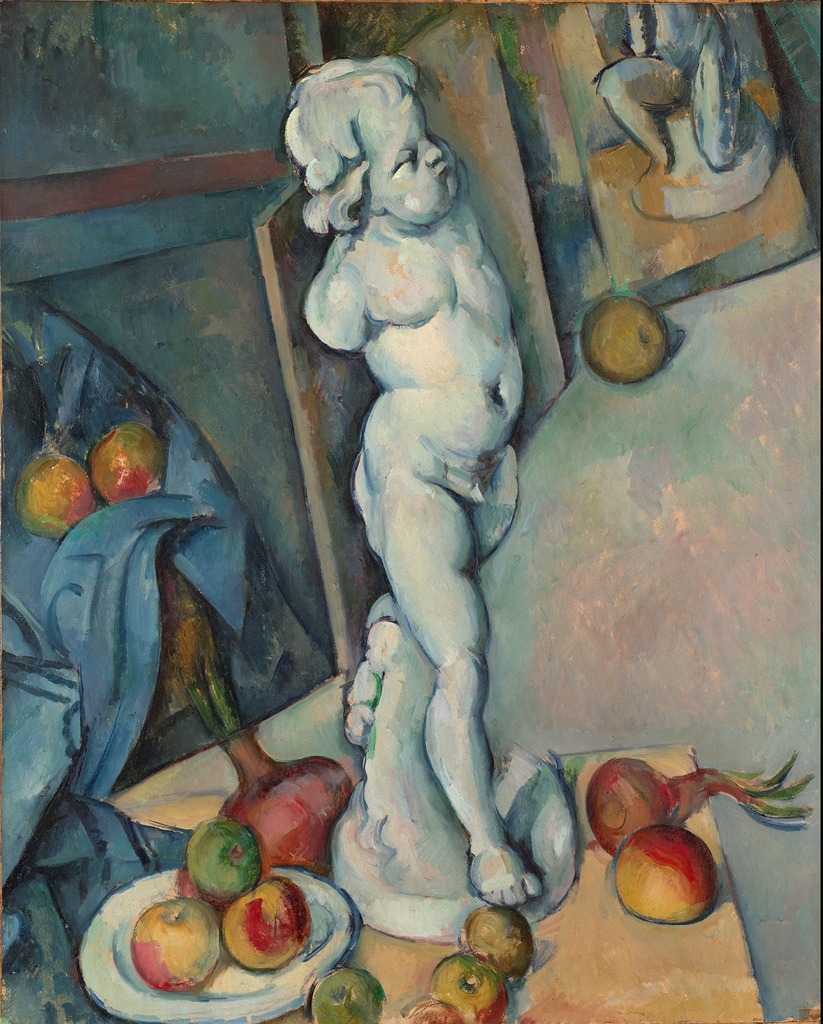
Influence Paul Cézanne is often considered to be one of the most influential painters of the late 19th century. Pablo Picasso readily admitted his great debt to the elder master. Similarly, Henri Matisse once called Cézanne, “…the father of us all.” For many years The Museum of Modern Art in New York organized its permanent collection so as to begin with an entire room devoted to Cézanne’s painting. The Metropolitan Museum of Art also gives over an entire large room to him. Clearly, many artists and curators consider him enormously important.
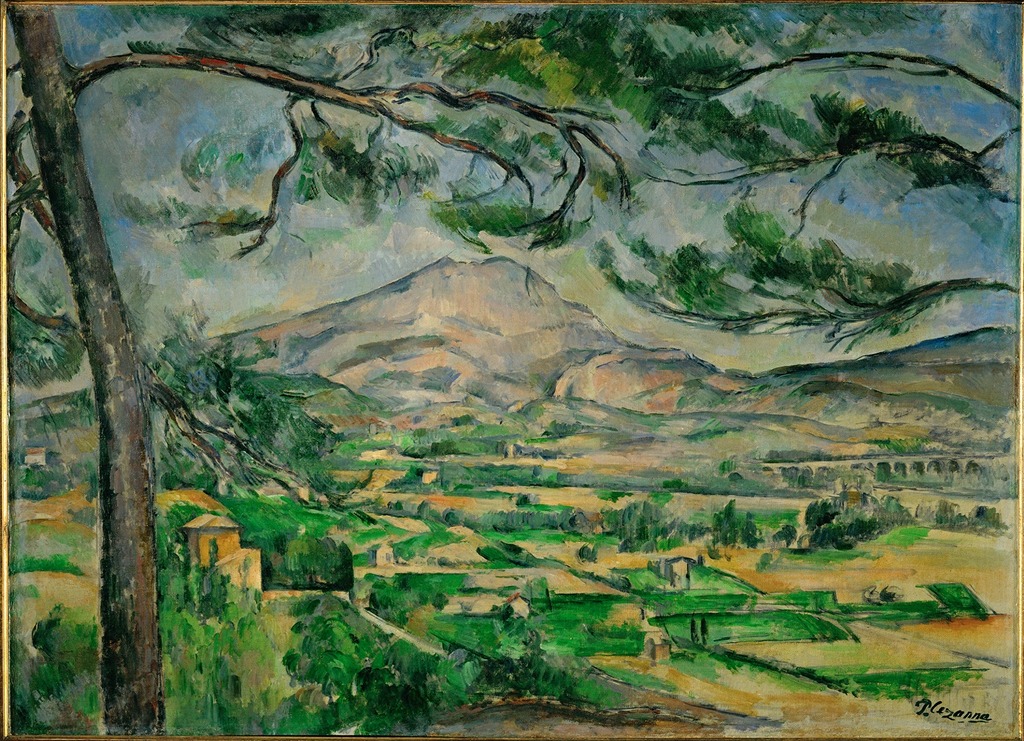
Cézanne, Still Life with Plaster Cupid (5:05)
Cézanne, Mont Sainte-Victoire (5:28)
Women Artists in the 19th Century
For the first time in Western history, we will see the emergence of the woman artist working alongside male artists, exhibited and recognized. That said, equality was far from a reality. Women artists in 19th century France still dealt with their share of discrimination. Edgar Degas still said of Mary Cassatt that “she painted too well to be a woman.”
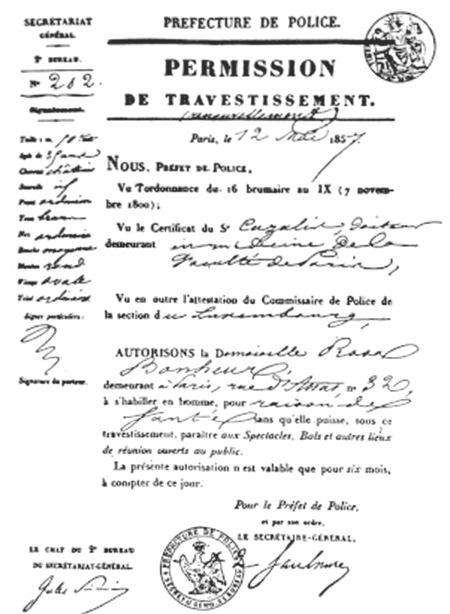
Famous Realist Rosa Bonheur had to acquire a French police permit to wear trousers, which she got to work in a slaughterhouse for the exclusive goal of understanding the anatomy of horses and cattle.
Artists from this period include Lucy Bacon, Marie Bashkirtseff, Anna Boch, Rosa Bonheur, Olga Boznańska, Marie Bracquemond, Mary Cassatt, Camille Claudel, Marie Ellenrieder, Kate Greenaway, Kitty Lange Kielland, Edmonia Lewis, Constance Mayer, Victorine Meurent, Berthe Morisot, Suzanne Valadon, Enid Yandell, and Wilhelmina Weber Furlong among others.
Marie Ellenrieder and Marie-Denise Villers worked in the field of portraiture in the beginning of the century, and Rosa Bonheur in realist painting and sculpture.
Elizabeth Jane Gardner was an American academic painter who was the first American woman to exhibit at the Paris Salon. In 1872 she became the first woman to ever win a gold medal at the Salon.
Olga Boznańska is considered the best-known of all Polish women artists, and was stylistically associated with French Impressionism.
Barbara Bodichon, Eleanor Fortescue-Brickdale, Kate Bunce, Evelyn De Morgan, Emma Sandys, Elizabeth Siddal, Marie Spartali Stillman, and Maria Zambaco were women artists of the Pre-Raphaelite movement.
During the century, access to academies and formal art training expanded more for women in Europe and North America. The British Government School of Design, which later became the Royal College of Art, admitted women from its founding in 1837, but only into a “Female School” which was treated somewhat differently, with “life”- classes consisting for several years of drawing a man wearing a suit of armour. The Royal Academy Schools finally admitted women beginning in 1861, but students drew initially only draped models. However, other schools in London, including the Slade School of Art from the 1870s, were more liberal. By the end of the century women were able to study the naked, or very nearly naked, figure in many Western European and North American cities.
The Society of Female Artists was established in 1855 in London and has staged annual exhibitions since 1857, when 358 works were shown by 149 women, some using a pseudonym.
Julia Margaret Cameron and Gertrude Kasebier became well known in the new medium of photography, where there were no traditional restrictions, and no established training, to hold them back.
Elizabeth Thompson (Lady Butler), perhaps inspired by her life-classes of armoured figures at the Government School, was one of the first women to become famous for large history paintings, specializing in scenes of military action, usually with many horses, most famously Scotland Forever!, showing a cavalry charge at Waterloo.
Berthe Morisot and the Americans, Mary Cassatt and Lucy Bacon, became involved in the French Impressionist movement of the 1860s and 1870s. American Impressionist Lilla Cabot Perry was influenced by her studies with Monet and by Japanese art in the late 19th century. Cecilia Beaux was an American portrait painter who also studied in France.
Media Attributions
- Figure 1. Vincent Van Gogh, Portrait of Gaugin (Man in a Red Beret). Oil paint on jute, 1888 (Image source: The Van Gogh Museum. Used with permission, for education use only)
- Figure 2. Paul Gauguin, Self-Portrait Titled “Les Miserables,” 1888, oil on canvas (Image source: University of California, San Diego via ArtStor. Used with permission. For Educational use only)
- Figure 3. Paul Gauguin, Vision After the Sermon (Jacob Wrestling with the Angel), 1888, oil on canvas. (National Galleries of Scotland, Edinburgh; Image source: Art History Survey Collection via ArtStor. Used with permission. For educational use only)
- Figure 4. George Seurat, Circus Sideshow, 1887-1888, oil on canvas (Image source: The Metropolitan Museum of Art, via ArtStor) is licensed under a CC0 (Creative Commons Zero) license
- Figure 5. George Seurat, Study for “A Sunday on La Grande Jatte,” 1884, oil on canvas. (The Metropolitan Museum of Art; Image source: Erich Lessing/ART RESOURCE, N.Y. via ArtStor. Image source: Metropolitan Museum of Art, via ArtStor) is licensed under a CC0 (Creative Commons Zero) license
- Figure 6. Vincent Van Gogh, Self Portrait Dedicated to Paul Gauguin, 1888, oil on canvas (Harvard Art Museums via Artstor. Used with permission, for education use only)
- Figure 7. Vincent Van Gogh, The Bedroom, 1888, oil on canvas (Image source: The Art Institute of Chicago Helen Birch Bartlett Memorial Collection via Artstor. Used with permission, for education use only)
- Figure 8. Vincent Van Gogh, The Starry Night, 1889, oil on canvas. (The Museum of Modern Art Acquired through the Lillie P. Bliss Bequest; Image source: Museum of Modern Art via Artstor. Used with permission, for education use only)
- Figure 9. Paul Cezanne, Still Life with Plaster Cupid, 1895, oil on paper on board (Image source: © The Samuel Courtauld Trust, The Courtauld Gallery, London via Artstor. Used with permission, for education use only)
- Figure 10. Paul Cézanne, Mont Sainte-Victoire, c. 1887, oil on canvas, 66.8 x 92.3 cm (Courtauld Institute of Art, London; Image source: Erich Lessing/ART RESOURCE, N.Y. via Artstor. Used with permission, for education use only)
- Figure 11. Police authorization allowing Rosa Bonheur to dress as a man (1857) (Image source: Wikimedia Commons) is licensed under a Public Domain license
Candela Citations
- Paul Gauguin, Self-Portrait with Portrait of u00c9mile Bernard (Les misu00e9rables). Authored by: Dr. Beth Harris and Dr. Steven Zucker,. Provided by: Smarthistory. Retrieved from: https://smarthistory.org/gauguin-self-portrait/. License: CC BY-NC-SA: Attribution-NonCommercial-ShareAlike
- Paul Gauguin, Vision after the Sermon (or Jacob Wrestling with the Angel). Authored by: Dr. Steven Zucker and Dr. Beth Harris. Provided by: Smarthistory. Retrieved from: https://smarthistory.org/paul-gauguin-vision-after-the-sermon-or-jacob-wrestling-with-the-angel/. License: CC BY-NC-SA: Attribution-NonCommercial-ShareAlike
- Georges Seurat, A Sunday on La Grande Jatte u2013 1884. Authored by: Dr. Steven Zucker and Dr. Beth Harris. Provided by: Smarthistory. Retrieved from: https://smarthistory.org/georges-seurat-a-sunday-on-la-grande-jatte-1884/. License: CC BY-NC-SA: Attribution-NonCommercial-ShareAlike
- Vincent van Gogh, Self-Portrait Dedicated to Paul Gauguin. Authored by: Dr. Beth Harris and Dr. Steven Zucker. Provided by: Smarthistory. Retrieved from: https://smarthistory.org/van-gogh-self-portrait-dedicated-to-paul-gauguin/. License: CC BY-NC-SA: Attribution-NonCommercial-ShareAlike
- Vincent van Gogh, The Bedroom. Authored by: Dr. Steven Zucker and Dr. Beth Harris. Provided by: Smarthistory. Retrieved from: https://smarthistory.org/vincent-van-gogh-the-bedroom/. License: CC BY-NC-SA: Attribution-NonCommercial-ShareAlike
- Paul Cu00e9zanne, Still Life with Plaster Cupid. Authored by: Rachel Ropeik, Dr. Beth Harris and Dr. Steven Zucker. Provided by: Smarthistory. Retrieved from: https://smarthistory.org/cezanne-still-life-with-plaster-cupid/. License: CC BY-NC-SA: Attribution-NonCommercial-ShareAlike
- Paul Cu00e9zanne, Mont Sainte-Victoire. Authored by: Dr. Ben Harvey. Provided by: Smarthistory. Retrieved from: https://smarthistory.org/cezanne-mont-sainte-victoire/. License: CC BY-NC-SA: Attribution-NonCommercial-ShareAlike
- Post-Impressionism. Authored by: James Voorhees. Provided by: The Met. Retrieved from: https://www.metmuseum.org/essays/post-impressionism. License: All Rights Reserved. License Terms: Used with permission, for educational use only
- Georges Seurat. Authored by: Pierre Courthion. Provided by: Encyclopaedia Britannica. Retrieved from: https://www.britannica.com/biography/Georges-Seurat. License: All Rights Reserved. License Terms: Used with permission, for educational use only
- Vincent van Gogh. Authored by: The Editors of Encyclopaedia Britannica. Provided by: Encyclopaedia Britannica. Retrieved from: https://www.britannica.com/biography/Vincent-van-Gogh. License: All Rights Reserved. License Terms: Used with permission, for educational use only
- Paul Cu00e9zanne. Authored by: Renu00e9 Huyghe. Provided by: Encyclopaedia Britannica. Retrieved from: https://www.britannica.com/biography/Paul-Cezanne. License: All Rights Reserved. License Terms: Used with permission, for educational use only

